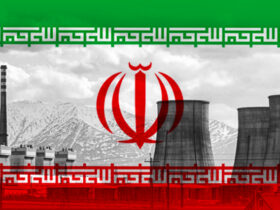October has regularly been a month of important events in Turkish history. This month reminds us of such events as the Armistice of Mudanya (October 11th 1922) and the Proclamation of the Turkish Republic (October 29th 1923), filling us with pride– but it is also a month of grief and misfortune as well. There are many examples of these events. The Ottoman defeat in the Battle of Lepanto in October 7th, 1571; the defeat in the Battle of Navarino and the destruction of the Ottoman-Egyptian Navy in 20 October 1827; Armistice of Mudros in October 30th 1918; and the Court decision on Sledgehammer Cases in October 9th 2013, for instance.
The darkest day of October
The saddest of these incidents occured on October 2nd 1992, when the TCG Muavenet destroyer ship was attacked by the American Aircraft Carrier USS Saratoga. The USS Saratoga hit the TCG Muavenet with two NATO Sea Sparrow missiles that were originally active as air defense missiles. The ship had been participating in one of the NATO’s scheduled naval drills in the Aegean Sea called Display Determination 92, where the ship’s commander Kudret Gungor, watch officer Lieutenant Alper Tunga Akan, Signal NCO Serkan Aktepe, Supply Sergeant Mustafa Kilic and Artillery Private Recep Akan were martyred. Several members of the ship’s crew were injured, while the ship itself was critically damaged. Some saw the incident as an accident while others thought it was a conspiracy. The Americans claimed that the incident occurred because a tactical exercise was mistaken for a real one.
The American perception of innocence
The late Admiral Vural Bayazit, who had only served one and a half months as the Commander of the Navy at the time, described the incident 18 years later: (Naval Academy Pusula Magazine, Interview with the Retired Admiral Vural Bayazit, Issue Number: 69, December 2010, Page 7) “Many different opinions and conspiracy theories were produced among the public in those days, as a result of the sequenced events…The final truth was revealed after all. The USS Saratoga Aircraft Carrier is stationed in the Adriatic, and it is on constant alert for any Yugoslavian air attacks. But it was briefly redeployed to the Aegean Sea for a NATO exercise. The Tactical Action Officer decided to have a quick training. In this training with no safety precautions whatsoever, the Sea Sparrow missile was accidentally launched and the TCG Muavenet was hit. The most critical thing revealed by the Investigation Committee is that the ship’s personnel were not informed on being redeployed to the Aegean. No training orders or daily orders were issued to the ship; the personnel still thought they were in the Adriatic. The report states that ‘This incident was caused by the lack of training and information of the ship’s personnel.’ I demanded a list, showing the ethnicity of the American personnel on board. The list came in and we inspected it. Their names were of mainly Latin and British origins. There was no name that could get us into trouble.”
It is clear from its own discrepancies that this statement was not aimed at finding out the actual truth and was hardly an appropriate response to this geopolitical challenge. These events could not possibly have been caused by an accident, but were rather the result of a cascade of intentional incidents.
It Is Nearly Impossible That This Was Accident
In order to fire a Sea Sparrow missile, which are also stationed on our MEKO-class frigates, 7 separate safety phases must be commenced. First, the aircraft carrier must activate the arm plugs on the launcher, which is at least 150 meters away from the Combat Operations Center. Then the launcher must be readied to fire by the fire switch on the system control section, located near the vicinity of the launcher. Then the target must be acquired with the fire control radar, by sending constant electromagnetic waves with the STIR radar and illuminating the target until the moment of the firing; and in the meantime, the system needs to be warmed up and a ready command should be waited for. In the final step, the ignition key needs to be turned and the button needs to be pressed. All these steps are impossible to pass without the commander’s notice and confirmation. In addition to that, illuminating a war vessel with a radar counts as a “hostile action”, even during exercises. Therefore, it is unacceptable for them to illuminate a NATO-allied warship with the STIR radar. On the other hand, it is unthinkable that the personnel of an aircraft carrier operations and combat centers would not have known that they had been deployed in the Aegean Sea. It is also not possible to maintain order and discipline without any daily orders and training orders in an aircraft carrier with 5000 personnel. On the other hand, the Sea Sparrow missile is a weapon of quick retaliation against air attacks. This weapon can only be used from 16 kilometers away\ if an air target approaches the warship with a threatening course and speed. If this weapon is used against a surface target (in SASS mode), there absolutely must not be an emergency situation, especially for an aircraft carrier. This is because this weapon can only be used against close targets within the horizon range. One of the most important points of the American’s version is that any aircraft or surface vessel which could pose a threat to the aircraft carrier is not allowed to breach this 100 miles radius. In that case, it is obvious that launching a missile in SASS mode was not an emergency security necessity. If such an emergency took place in the middle of the night, all 5000 personnel would have to reach their battle stations, which was not the case. Even the Ship Commander was not on the bridge or in the Operations Center.
Hollow excuses from the US
As compensation for our losses, the US approved the transfer of “Knox” class frigates to Turkey a few months later. Retired Admiral Atilla Kiyat, who had been on the delegation during Admiral Vural Bayazit’s official visit to the United States, describes the US’ perspective after this sad event a few months after in the winter of 1993, in the 349th page of the journal book “Three stars one penalty”:
“The official meeting was struck by the USS Saratoga incident. The American officials of all levels felt the shame of it. They were not able to pay for the damage done to TCG Muavenet, by their law. They also could not put the delinquent personnel to the court. They thought that if they sent these personnel to court, the warship commanders who are on a mission especially in a crisis zone could react late in the face of a serious threat, which would lead to irreparable casualties. They had experienced such an example in the Gulf, and lost a frigate with many crew members.”
It is completely wrong to accept this assessment from the Americans. First of all, in the aforementioned example of the USS Stark incident on May 17, 1982, the incident was actually an air attack. In addition to that, the USS Stark frigate was recovered after being hit by an AM 39 Exocet missile from the Iraqi Mirage aircraft, it was not sunk. Both the person who decided to use the Sea Sparrow missiles and the person who shoots it at TCG Muavenet have already accepted and confirmed that the threat is not an airborne threat when selecting the SASS mode, which is not the primary mode of the missile. Thus, there is no such situation where a momentarily decision delay could lead to such horrible results.
Looking for the truth
Those who knew about US history and the country’s strategic depths understood that this incident was not an accident from the beginning. The confusing track records of the US is extensive, including the sinking of the USS Maine battleship near the port of Havana with a huge explosion on February 15, 1898 in order to invade Cuba, and feigned the attack on the USS Maddox destroyer from three North Vietnamese torpedo boats on August 2,1964 in the Tonkin Bay in order to attack Vietnam, and which launched a missile attack on the Chinese Embassy in Belgrade on May 7, 1999 during the NATO invasion of Serbia (an invasion which was launched without any UN resolution), and attacked Iraq on March 21, 2003 under false allegations of nuclear weapons– all of which at the very least calls into question the US’ honesty. It is also not a secret that there is a CIA quarter on American aircraft carriers that is not under the command of the ship’s commander, and is restricted to any unauthorized entrance.
Message Given In Context Of Muavenet
With the Muavenet incident, the United States sent an indirect message to Turkey, which did not allow the PKK organization in Northern Iraq and resisted against the plans of hegemony in conjunction with the US, reaching its peak of power in the post-Cold War era in the early 90s. We might also remember that PKK has taken around 4,500 casualties as a result of the operation launched in Northern Iraq with tens of thousands of troops in the field after massacres made by the PKK in Semdinli, Aktutun and Derecik in the same year August 30, 1992. We remember the government’s negative stance and resistance against extending the duration of the Operation Provide Comfort around the same time. After Muavenet was hit, that resistance was broken down.
The resistance against puppet Kurdistan
The TCG Muavenet has taken its implicit place in this struggle as a part of the Republic Navy. The punishment for the stances and struggles of the patriotic commanders and statesmen such as General Esref Bitlis, who foresaw the threat of Barzanistan, was attempted to be delivered through Muavenet, and the process was intentionally hindered. The souls of Muavenet and its martyred crewmen have suffered greatly from the cascade of mistakes made up to the point of the Barzanistan referendum process. Today, the Spirit of Muavenet must survive despite all the suffering, and an independent Barzanistan in Iraq and a puppet Kurdish state in Northern Syria, must be prevented by every means necessary. Their ultimate goal is the proclamation of a puppet Kurdistan, which has sea access through the Mediterranean. If that day comes, none of our water reservoirs, the SAP (Southeastern Anatolia Project), or the Blue Homeland will remain. There should not be any political or economic concerns in this struggle, because the loss would be a geopolitical one. We commemorate our fallen martyrs at Muavenet, with grief, yearning and gratitude.

















Leave a Reply